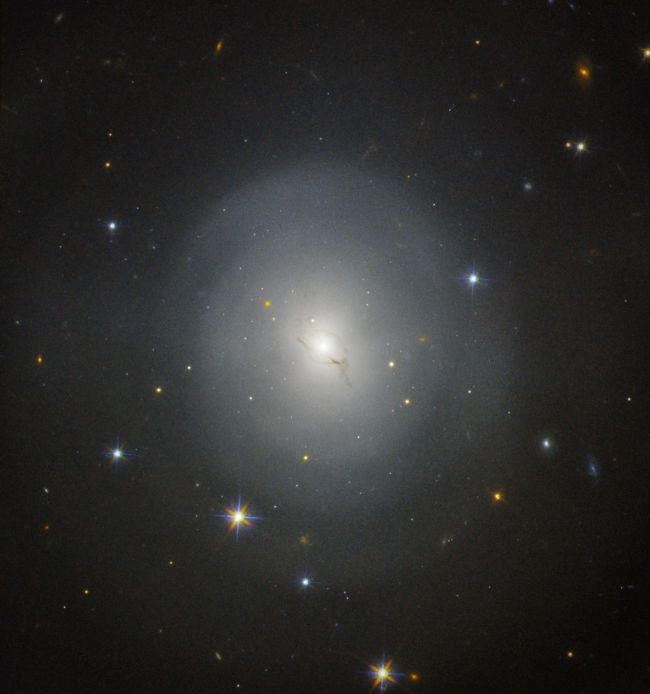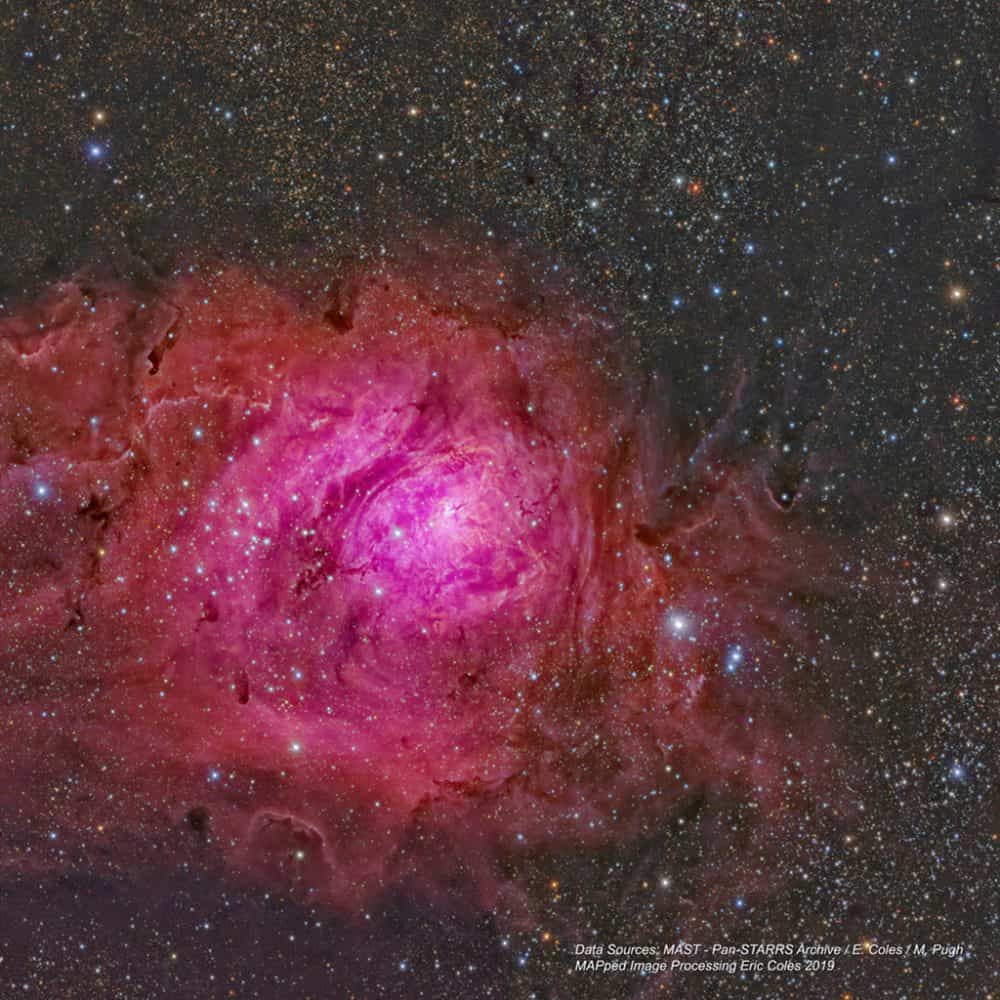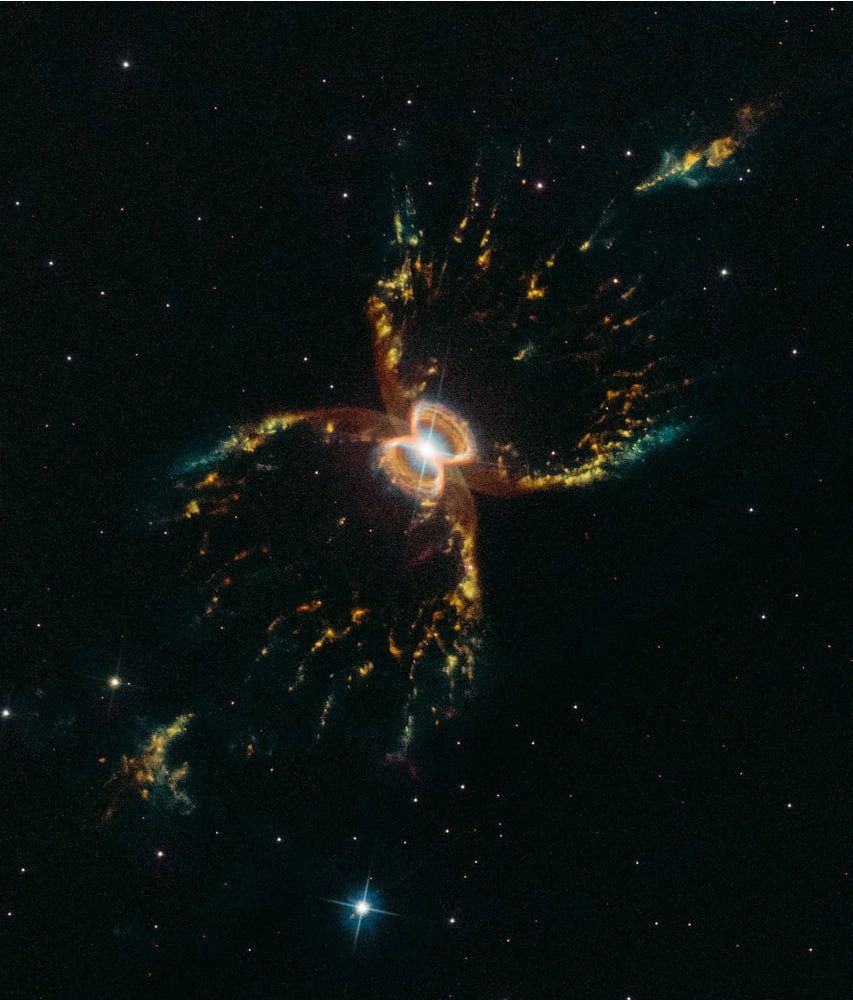Blog
The Community Band performing on Arbor Day at Theodore Wirth Regional Park 7pm
https://www.minneapolisparks.org/activities__events/events/arbor_day/
more...The kilonova explosion was spotted in the galaxy NGC 4993, which is shown here in an image from the Hubble Space Telescope. The kilonova is visible here to the upper left of the very bright galactic center, and appears as a golden-yellow spot. Astronomers have two names for the Aug. 17 event, depending on what type of phenomenon is referred to. GW170817 refers to the gravitational waves observed from the merger, while GRB 170817A looks at the gamma-ray burst produced by the neutron-star merger. Gamma-ray bursts are the brightest known electromagnetic events in the universe, and can be created by a few different phenomena. NGC 4993 (also catalogued as NGC 4994) is a lenticular galaxy located about 140 million light-years away in the constellation Hydra. It was discovered on 26 March 1789 by William Herschel and is a member of the NGC 4993 Group.
more...Lakshminarayana Shankar (born 26 April 1950), also known as L. Shankar and Shenkar, is an Indian-born American violinist, singer, and composer. In the 1970s he formed the band Shakti with British guitarist John McLaughlin. His style combines jazz and Indian classical music, though he also worked in pop and rock, as with Peter Gabriel. Shenkar (aka Shankar, L.Shankar) is widely considered a living legend, a pioneer and a musical genius by his peers who hold him in the highest esteem. Shenkar has enthralled audiences and critics alike all over the world. A child prodigy who is a virtuoso violinist, vocalist (with 5 1/2 octaves range), composer and record producer who has sold over 50 million albums through his solo projects and collaborations with other artists throughout the world.Shenkar was born in Madras, India and grew up in Jaffna, Sri Lanka where his father V. Lakshminarayana Iyer was a professor at the Jaffna College of Music. He was exposed to Carnatic music and other styles from an early age.He started studying the vocal at the age of two then violin at five then mrdangam at seven. His father was an esteemed violinist, vocalist, his mother L Seethalakshmi played the veena and all his five older siblings were also proficient in music. At the age of seven, Shenkar gave his first public concert,at a Ceylonese temple, Nallur Kandaswarmy. He gained considerable reputation performing and recording with some of the most eminent names in Carnatic music, playing all through India, such as Semmangudi Srinivasa Iyer, Chembai Vaithyanatha Baghavatar, Palghat Mani Iyer, Alathur Srinivasa Iyer and many other leading musicians besides his own solo concerts which he performed with the great Palghat Mani Iyer all over India and USA.
more...Theodore Marcus Edwards (April 26, 1924 – April 20, 2003) was an American jazz tenor saxophonist on the west coast of the U.S. Edwards was born in Jackson, Mississippi. He learned to play at a very early age, first on alto saxophone and then clarinet.
His uncle sent for him to come to Detroit to live because he felt opportunities were better. Due to illness in the family, he went back to Jackson and ventured to Alexandria, Louisiana. He was persuaded by Ernie Fields to join his band after going to Tampa, Florida. Teddy had planned to go to New York City, but Ernie Fields convinced him he could get there by way of Washington, DC, if he worked with his band. Teddy ended up at the “Club Alabam” on Central Avenue in Los Angeles, which later became his city of residence.
Teddy Edwards played with many jazz notables, including his personal friend Charlie Parker, Roy Milton, Wynonie Harris, Vince Guaraldi, Joe Castro and Ernie Andrews. A classic 1947 recording with Dexter Gordon, The Duel, helped set him up as a legend, a status he liked to maintain by challenging other worthy sax players to similar duels whenever possible, including a recording with Houston Person. One such “memorable” duel took place in the 1980s at London’s 100 Club with British tenor Dick Morrissey.
more...John Ned “Johnny” Shines (April 26, 1915 – April 20, 1992) was an American blues singer and guitarist.
Shines was born in the community of Frayser, in Memphis, Tennessee. He was taught to play the guitar by his mother and spent most of his childhood in Memphis, playing slide guitar at an early age in juke joints and on the street. He moved to Hughes, Arkansas, in 1932 and worked on farms for three years, putting aside his music career. A chance meeting with Robert Johnson, his greatest influence, gave him the inspiration to return to music. In 1935, Shines began traveling with Johnson, touring in the United States and Canada. They parted in 1937, one year before Johnson’s death.
Shines played throughout the southern United States until 1941, when he settled in Chicago. There he found work in the construction industry but continued to play in local bars.
He made his first recording in 1946 for Columbia Records, but the takes were never released. He recorded for Chess Records in 1950, but again no records were released. He kept playing with blues musicians in the Chicago area for several more years. In 1952, Shines recorded what is considered his best work, for J.O.B. Records. The recordings were a commercial failure, and Shines, frustrated with the music industry, sold his equipment and returned to working in construction.
more...Flamenco Fridays with Rumba
Rumba flamenca, also known as flamenco rumba or simply rumba (Spanish pronunciation: [ˈrumba]), is a palo (style) of flamenco music developed in Andalusia, Spain. It is known as one of the cantes de ida y vuelta (roundtrip songs), music which diverged in the new world, then returned to Spain in a new form. The genre originated in the 19th century in Andalusia, southern Spain, where Cuban music first reached the country.
Rumba flamenca was primarily influenced by guaracha, an uptempo style of vocal music which originated in Havana‘s musical theatre. Some elements from Cuban rumba were also incorporated, although minor, despite the name. Although unlikely, both guaracha and Cuban rumba might have been influenced by flamenco earlier in the 19th century. Guarachas can be traced back to the Spanish jácaras, thus justifying the classification of rumba flamenca as a cante de ida y vuelta.
The first rumba flamenca recordings were made by La Niña de los Peines in the 1910s. During the late 20th century, Paco de Lucía, together with percussionist Rubem Dantas, incorporated Afro-Peruvian musical elements such as the cajón (wooden box) and certain rhythms.
more...Ridges of glowing interstellar gas and dark dust clouds inhabit the turbulent, cosmic depths of the Lagoon Nebula. Also known as M8, the bright star forming region is about 5,000 light-years distant. But it still makes for a popular stop on telescopic tours of the constellation Sagittarius, toward the center of our Milky Way Galaxy. Dominated by the telltale red emission of ionized hydrogen atoms recombining with stripped electrons, this stunning view of the Lagoon is over 100 light-years across. At its center, the bright, compact, hourglass shape is gas ionized and sculpted by energetic radiation and extreme stellar winds from a massive young star. In fact, the many bright stars of open cluster NGC 6530 drift within the nebula, just formed in the Lagoon several million years ago. Broadband image data from Pan-STARRS (Panoramic Survey Telescope & Rapid Response System) was combined with narrowband data from amateur telescopes to create this wide and deep portrait of the Lagoon Nebula.
more...Vassar Carlton Clements (April 25, 1928 – August 16, 2005) was a Grammy Award-winning American jazz, swing, and bluegrass fiddler. Clements has been dubbed the Father of Hillbilly Jazz, an improvisational style that blends and borrows from swing, hot jazz, and bluegrass along with roots also in country and other musical traditions Clements was born in Kinard, Florida,[2] but grew up in Kissimmee. He taught himself to play the fiddle at age 7, learning “There’s an Old Spinning Wheel in the Parlor” as his first song. Soon, he joined with two first cousins, Red and Gerald, to form a local string band. In his early teens Clements met Bill Monroe and the Blue Grass Boys when they came to Florida to visit Clements’ stepfather, a friend of fiddler Chubby Wise. Clements was impressed with his playing.
Albert Nelson (April 25, 1923 – December 21, 1992), known by his stage name Albert King, was an American blues guitarist and singer whose playing influenced many other blues guitarists. He is perhaps best known for the popular and influential album Born Under a Bad Sign (1967) and its title track. He is one of the three performers (together with B. B. King and Freddie King) known as the “Kings of the Blues.”
He was also known as “The Velvet Bulldozer” because of his smooth singing and large size—he stood taller than average, with sources reporting 6 ft 4 in (1.93 m) or 6 ft 7 in (2.01 m), and weighed 250 lb (110 kg)—and also because he drove a bulldozer in one of his day jobs early in his career.
King was posthumously inducted into the Rock and Roll Hall of Fame in May 2013. In 2011, he was ranked number 13 on Rolling Stone’s 100 Greatest Guitarists of All Time. Nelson was born on a cotton plantation in Indianola, Mississippi.
Ella Jane Fitzgerald (April 25, 1917 – June 15, 1996) was an American jazz singer sometimes referred to as the First Lady of Song, Queen of Jazz, and Lady Ella. She was noted for her purity of tone, impeccable diction, phrasing, intonation, and a “horn-like” improvisational ability, particularly in her scat singing.
After a tumultuous adolescence, Fitzgerald found stability in musical success with the Chick Webb Orchestra, performing across the country but most often associated with the Savoy Ballroom in Harlem. Her rendition of the nursery rhyme “A-Tisket, A-Tasket” helped boost both her and Webb to national fame. After taking over the band when Webb died, Fitzgerald left it behind in 1942 to start her solo career.
Her manager was Moe Gale, co-founder of the Savoy, until she turned the rest of her career over to Norman Granz, who founded Verve Records to produce new records by Fitzgerald. With Verve she recorded some of her more widely noted works, particularly her interpretations of the Great American Songbook.
While Fitzgerald appeared in movies and as a guest on popular television shows in the second half of the twentieth century, her musical collaborations with Louis Armstrong, Duke Ellington, and The Ink Spots were some of her most notable acts outside of her solo career. These partnerships produced some of her best-known songs such as “Dream a Little Dream of Me“, “Cheek to Cheek“, “Into Each Life Some Rain Must Fall“, and “It Don’t Mean a Thing (If It Ain’t Got That Swing)“.
In 1993, she ended her nearly 60-year career with her last public performance. Three years later, she died at the age of 79 after years of declining health. Her accolades included fourteen Grammy Awards, the National Medal of Arts, and the Presidential Medal of Freedom. Fitzgerald was born on April 25, 1917, in Newport News, Virginia.
https://www.youtube.com/watch?v=2zdGFBBnNtg
The symmetric, multi-legged appearance of the Southern Crab Nebula is certainly distinctive. About 7,000 light-years distant toward the southern sky constellation Centaurus, its glowing nested hourglass shapes are produced by the remarkable symbiotic binary star system at its center. The nebula’s dramatic stellar duo consists of a hot white dwarf star and cool, pulsating red giant star shedding outer layers that fall onto the smaller, much hotter companion. Embedded in a disk of material, outbursts from the white dwarf cause an outflow of gas driven away both above and below the disk resulting in the bipolar hourglass shapes. The bright central shape is about half a light-year across. This new Hubble Space Telescope image celebrates the 29th anniversary of Hubble’s launch on April 24, 1990 on board the Space Shuttle Discovery.
more...Joe Henderson (April 24, 1937 – June 30, 2001) was an American jazz tenor saxophonist. In a career spanning more than four decades, Henderson played with many of the leading American players of his day and recorded for several prominent labels, including Blue Note.
Born in Lima, Ohio, Henderson was one of five sisters and nine brothers. He was encouraged by his parents Dennis and Irene (née Farley)and older brother James T. to study music. He dedicated his first album to them “for being so understanding and tolerant” during his formative years. Early musical interests included drums, piano, saxophone and composition. According to Kenny Dorham, two local piano teachers who went to school with Henderson’s brothers and sisters, Richard Patterson and Don Hurless, gave him a knowledge of the piano. He was particularly enamored of his brother’s record collection. It seems that a hometown drummer, John Jarette, advised Henderson to listen to musicians like Lester Young, Stan Getz, Dexter Gordon and Charlie Parker.
more...John Arnold Griffin III (April 24, 1928 – July 25, 2008) was an American jazz tenor saxophonist. Nicknamed “the Little Giant” for his short stature and forceful playing, Griffin’s career began in the early 1940s and continued until the month of his death. A pioneering figure in hard bop, Griffin recorded prolifically as a bandleader in addition to stints with pianist Thelonious Monk, drummer Art Blakey, in partnership with fellow tenor Eddie “Lockjaw” Davis and as a member of the Kenny Clarke/Francy Boland Big Band after he moved to Europe in the 1960s. In 1995, Griffin was awarded an Honorary Doctorate of Music from Berklee College of Music.
Griffin studied music at DuSable High School in Chicago under Walter Dyett, starting out on clarinet before moving on to oboe and then alto sax. While still at high school at the age of 15, Griffin was playing with T-Bone Walker in a band led by Walker’s brother.
Alto saxophone was still his instrument of choice when he joined Lionel Hampton‘s big band three days after his high school graduation, but Hampton encouraged him to take up the tenor, playing alongside Arnett Cobb. He first appeared on a Los Angeles recording with Hampton’s band in 1945 at the age of 17.
more...More Posts
- Homesick James
- Fats Pichon
- Jimmy McGriff
- Scott LaFaro
- World Music Trio Da Kali
- Daily Roots Lee Scratch Perry
- Rhythm Roots Workshop Tasks Unlimited
- Cosmo NGC 1893
- Emmylou Harris
- Marvin Gaye
- Leon Russell
- Larry Coryell
- Booker Little
- World Music Cumar Dhuule
- Daily Roots Dennis Brown
- Alien Spaceships Circling Earth
- Challenge to Change
- Cosmo NGC 4945
- Jorge López Ruiz
- Alberta Hunter



